Eileen Agar (1899-1991)
Happy Breakfast, 1937

Oil on board
30 x 19.5 cm
Argentinian-born Agar had studied in London under sculptor Leon Underwood in 1924 before attending the Slade School of Fine Art in London from 1925-26. In 1928 she moved to Paris to study under Czech painter František Foltýn. There, she recalled seeing a painting by Max Ernst in a gallery window, and remembered, ‘It was in a party in another gallery at around the same time that I met André Breton, who introduced me to Paul Éluard’. 1
In 1936 Agar was selected by Henry Moore, Roland Penrose and critic Herbert Read to be included in the first International Surrealist Exhibition, held in London. The following year, she was invited by Penrose to join him at his brother’s house in Cornwall was what he called, ‘a sudden surrealist invasion. Paul Éluard and Nusch were the first to arrive and the last to leave. Herbert Read, Eileen Agar and Joseph Bard were there with Mesens and of course Max Ernst and Leonora.’2
Agar recalled, ‘it was a delightful Surrealist house party that July, with Roland taking the lead, ready to turn the slightest encounter into an orgy… The Surrealists were always supposed to be such immoral monsters, but I for one did not go to bed with everybody who asked me. When would I have had time to paint?’ 3 The group reconvened later that summer, staying with Dora Maar and Picasso in Mougins, France, where Agar painted this work.
The painting is constructed like a collage, with fragments of different materials depicted in paint, most obviously the red and white chequered table cloth. The painting is dominated by two heads in profile, a recurring motif for Agar who included four profile heads in the 1933-4 The Autobiography of an Embryo, and made three collages featuring profiles in the years surround the creation of Happy Birthday; Precious Stones 1936, Collage Head 1937 and Butterfly Bride 1937. Happy Birthday also reflects in paint Agar’s use of found marine objects in her work, featuring a large blue starfish to the bottom left of the canvas. In 1939 she painted Fish Circus, a watercolour composition that features a real starfish, found while beachcombing, pinned into the centre of the canvas, and made Marine Object, a sculptural assemblage topped by a starfish.
1. Eileen Agar, A Look at my Life, (London: Methuen, 1988), p. 87
2. Roland Penrose, Scrap Book 1900-1981 (London: Thames & Hudson, 1981), p.107
3. Agar, A Look at my Life, p.133
Provenance:
Purchased from the artist at the 1964 exhibition by Lord Croft;
Purchased at Christie’s, London, 4 June 1999 by Jeffrey Sherwin
Exhibition History:
London, Brook Street Gallery, Eileen Agar Retrospective Exhibition of Paintings and Collages 1930-64, October-November 1964, no.5.
London, Commonwealth Art Gallery, Eileen Agar Retrospective Exhibition, September-October 1971, no.12.
Edinburgh, Scottish National Gallery of Modern Art, Eileen Agar 1899 – 1991, A Centenary Exhibition, 1 December 1999- 27 February 2000, travelling to Leeds, Leeds Art Gallery, March – 30 April 2000.
Middlesbrough, MIMA, British Surrealism & Other Realities: The Sherwin Collection, 23 May – 17 August 2008.
Leeds, Leeds Art Gallery, British Surrealism in Context: A Collector’s Eye, 10 July – 1 November 2009, p.111
Literature:
Eileen Agar: 1899-991 A Centenary Exhibition, exhibition catalogue, Scottish National Gallery of Modern Art, 1999, by Ann Simpson et al., cat. no. 42.
British Surrealism in Context: A Collector’s Eye, exhibition catalogue, Leeds Art Gallery, 2009, (eds. Silvano Levy and Tanja Pirsig-Marshall), p.111.
Image: © Estate of Eileen Agar. All rights reserved 2023 / Bridgeman Images






